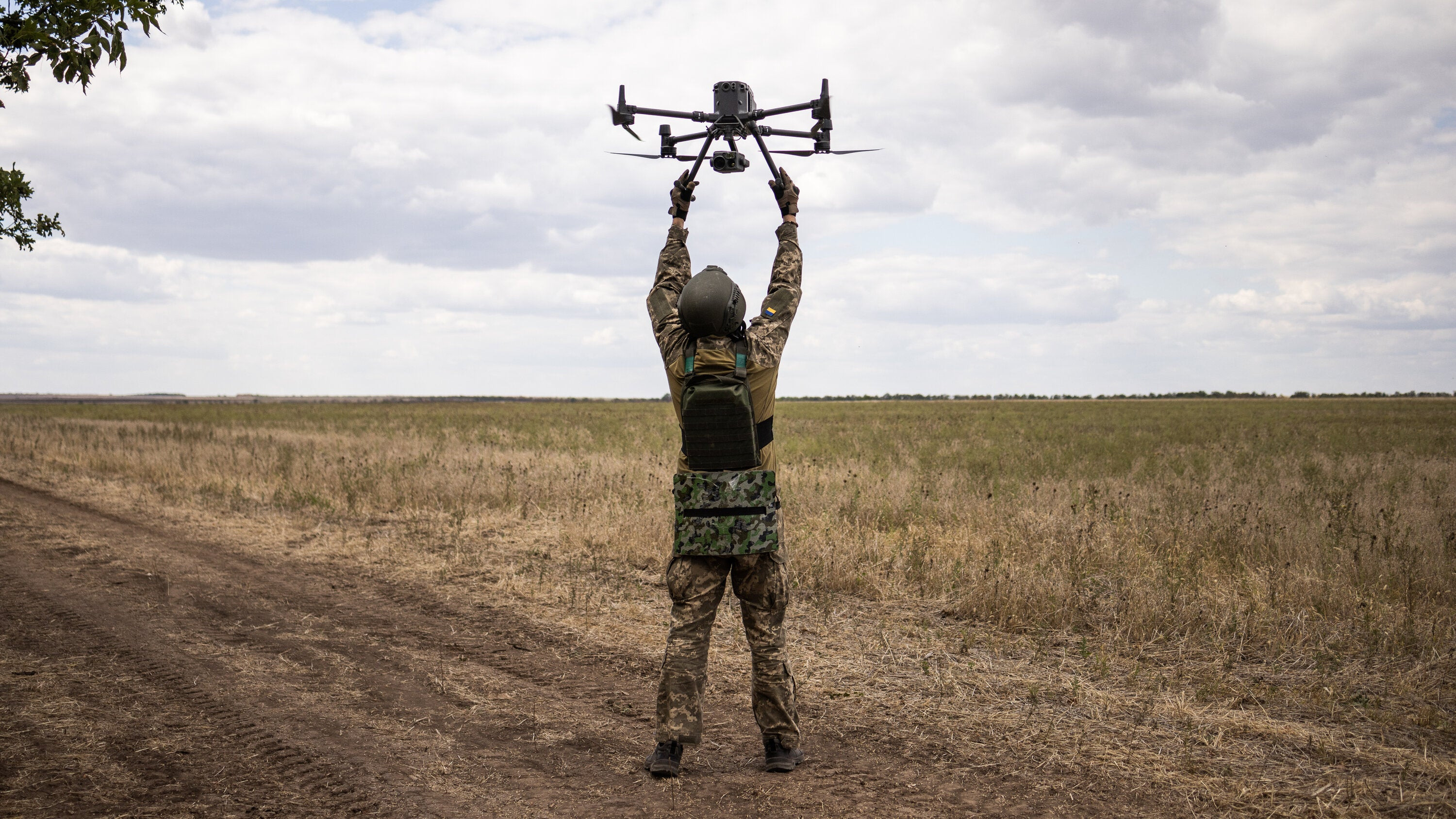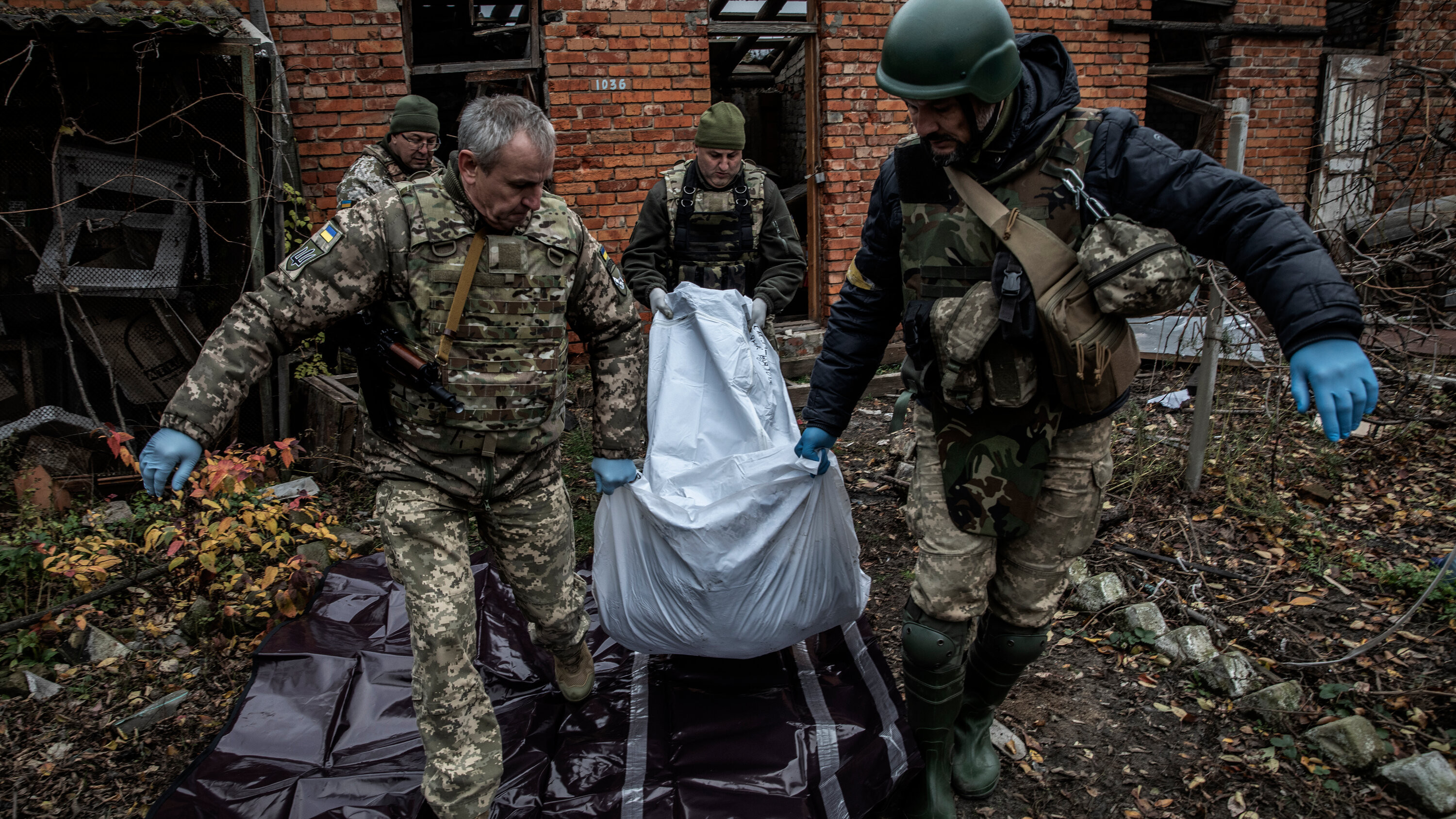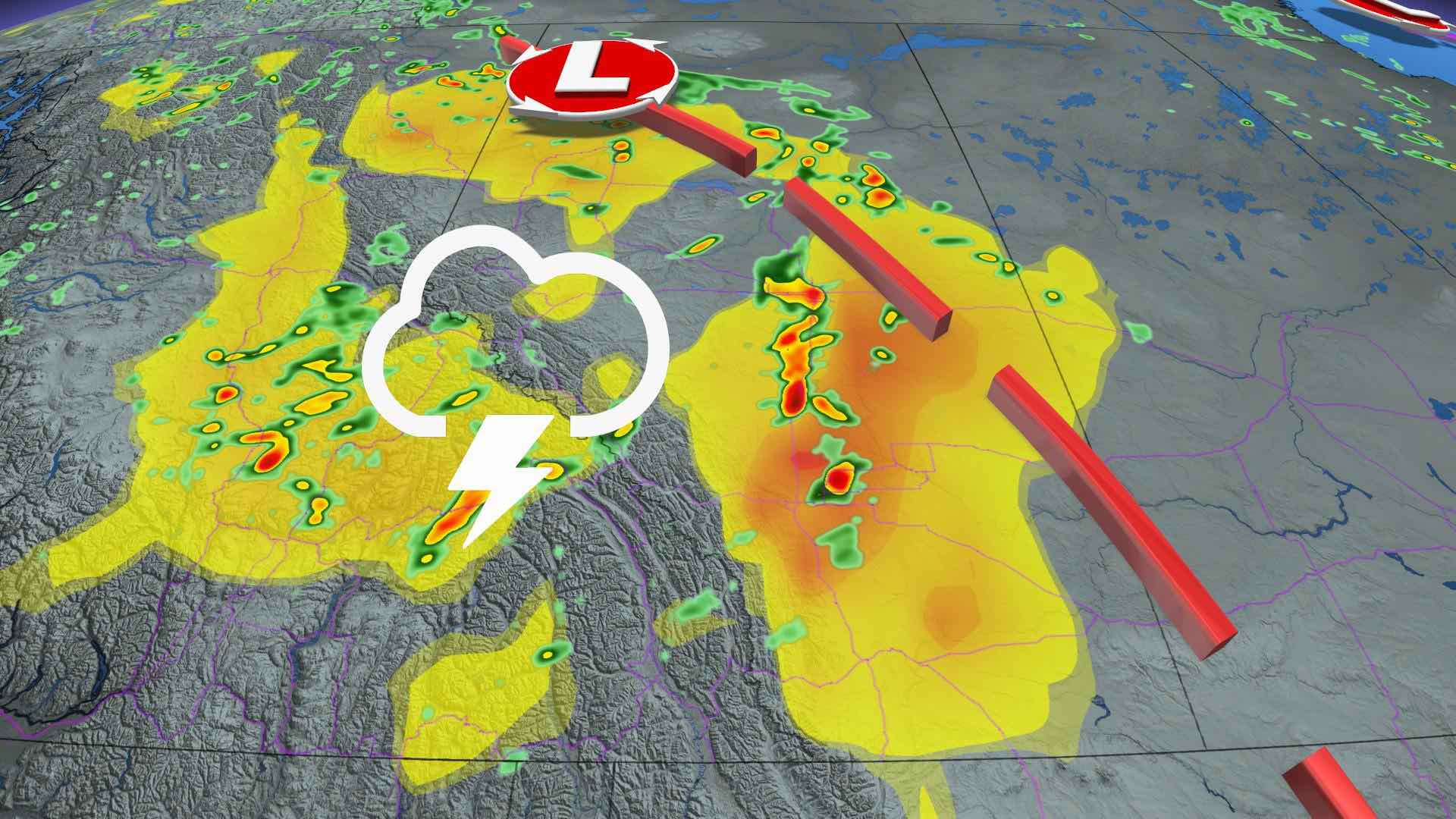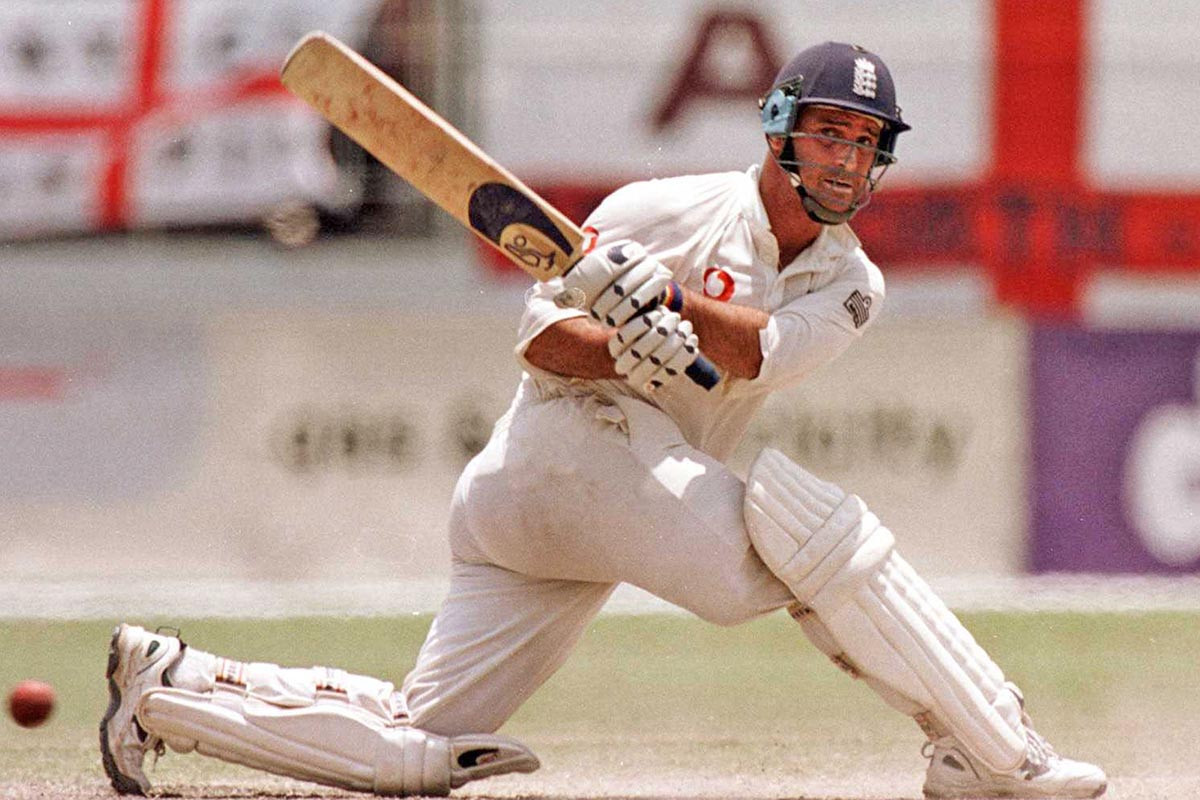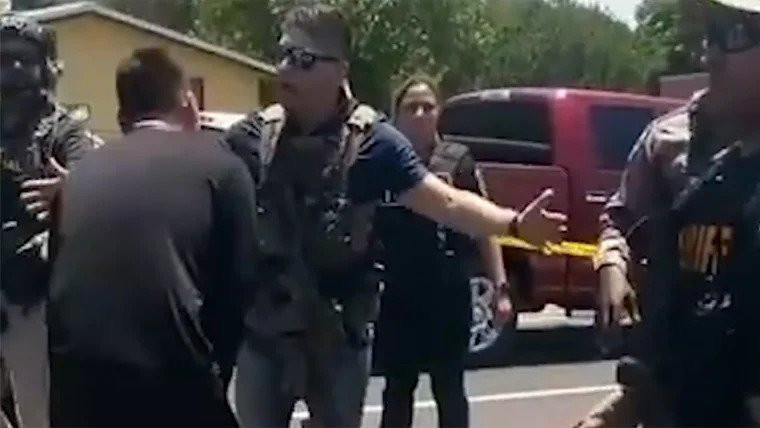The skirmish in Selydove was brutal and costly—for the Russians. Potentially hundreds of Ukrainian troops from four brigades are holding a vulnerable salient south of Pokrovsk, a Ukrainian stronghold that sits astride critical supply lines in Donetsk Oblast in eastern Ukraine. For days, some experts have been advising the Ukrainians in the salient—30 square miles stretching between the village of Ukrainsk and the Vovcha River to the east—to retreat in order to avoid getting surrounded, cut off and destroyed by a Russian force with a fourfold advantage in troops and equipment. But the Ukrainians in the salient aren’t quite ready to quit. On Wednesday, they fought—and won—a brutal skirmish at a key road and rail intersection between the salient and the main Ukrainian sector to the north.
The fight developed when at least two Russian vehicles, seemingly including a BTR wheeled armored personnel carrier and an MT-LB armored tractor, raced along the main east-west road into Selydove, a Ukrainian-held settlement that anchors the front line between Pokrovsk and Ukrainsk. It’s obvious why the Russian central grouping of forces wants to infiltrate Selydove—and equally obvious why the Ukrainians are determined to hold fast in the town. As long as the Ukrainians hold out in the salient to the south, they pose a threat to the left flank of the Russian 2nd Combined Arms Army and 90th Tank Division—the main units within the local Russian grouping of forces—as they roll toward Pokrovsk.
“Over the past week, the command of the center [grouping], especially the 2nd Army and 90th Tank Division, have shifted their main focus from directly targeting Pokrovsk to pushing towards Selydove and the surrounding areas to the east and southeast,” the Ukrainian Center for Defense Strategies reported on Sunday. “If they succeed, it will allow them to advance further on Pokrovsk and secure the left flank of the forces moving in from the south.”
The Ukrainians are trying to ensure the Russians don’t succeed—and are apparently fighting to preserve the salient south of Pokrovsk in order to maintain the threat to the Russians’ left flank. As those Russian vehicles rolled into the eastern edge of Selydove on Wednesday, a Ukrainian drone spotted them, and a Ukrainian tank—likely a T-64 from the recently deployed Kara-Dag brigade of the Ukrainian national guard—moved to intercept from the west.
The BTR managed to disembark a squad of a dozen or so infantry in what the crew must have believed was a safe position: the road underpass beneath the local north-south railway. But the infantry were still huddled next to the BTR when the Ukrainian tank hit the vehicle with a 125-millimeter cannon round, damaging the BTR and apparently wounding or killing some of the infantry.
The damaged BTR soon had company: what may have been an MT-LB. But the MT-LB took a hit, too—and was on fire as the Ukrainian tank crawled up to the underpass. The Ukrainians clearly aren’t willing to lose the roads and rails connecting Pokrovsk to Selydove to Ukrainsk and to the adjacent salient—not as long as they’re still actively fighting for Pokrovsk and not just planning their retreat. So the three-person crew of that T-64 hit the burning MT-LB at point-blank range with another 125-millimeter round—and then proceeded to shove the flaming wreckage clear of the overhead rail bridge.
The outcome was clear. The Russian assault failed with heavy losses in people and equipment. And for the moment, at least, the Ukrainian positions were intact and the roads connecting them were clear. For now, Pokrovsk holds—and so does the salient to the south.
The 13th Khartiia Brigade’s Success
Soldiers from the 13th Khartiia Brigade of the National Guard of Ukraine (NGU) have posted a video of a successful assault on the Russian positions in Kharkiv Oblast. According to the brigade’s press service, as a result of the assault, 34 invaders were killed and 23 wounded. During the assault Khartiia Brigade also cleared 7 infantry positions and an ATGM firing position, destroyed a howitzer, and drove the enemy to the next line of defense. The 13th Khartiia Brigade reported that behind every minute of a successful assault were dozens of hours of planning and preparation. This assault by the Ukrainian soldiers was no exception.
The attack plan was refined through detailed preparation, including training with mock-ups and on the ground. “Success in combat depends on luck and preparation. We cannot influence luck, but we can influence the training and cohesion of our soldiers and commanders, the ability to make decisions in the face of a lack of time, information and resources, and the ability to respond to changing situations on the battlefield,” said Brigade Commander Colonel Ihor Obolenskyi.
Ukraine’s Military Gains
The intense five-minute footage shows soldiers clearing enemy infantry and an anti-tank firing missile position, all whilst pushing the Russian forces back. The footage was shared by the Ukrainian 13th brigade of the National Guard on Telegram. Tanks can be seen barrelling down roads and blasting through wooded areas, knocking down trees and pushing through to enemy territory. Aerial strike footage and mortars firing on the ground are also seen, with several point of view shots of soldiers firing guns and moving through the woods. Bullets are shown rapidly hitting the ground out of machine guns and Ukrainian soldiers rush out of tanks and immediately encounter enemies in the tall grass. Soldiers are seen diving down into cover in the woods, hiding behind trees and hills to avoid the enemy fire.
Putin’s Shift Towards Peace Talks
Ukraine has fought back, with their daring excursion into the Russian-occupied territory of Kursk and the capture of 1,300 square kilometres of additional Russian territory including a valuable gas and export pipeline. Vladimir Putin has since criticised this attack, claiming that it has done little to turn the tide of the war, failing to slow Russia's advancements in the east. Putin said that the Russian army is slowly pushing the Ukrainian forces out of Kursk. However, he has also expressed a desire for peace talks, in a huge moment that could mark a significant moment in the war. The ageing dictator said that Russia had some encouraging words for a possible peace deal. He said: “If there is a desire of Ukraine to carry on with the negotiations, I can do that.” Putin also suggested that China, India and Brazil could be mediators in peace talks.
Why Putin’s Call for Peace Talks Should Be Met with Skepticism
Vladimir Putin is not known for making offers out of the goodness of his heart. So his sudden interest in peace talks to end the Ukraine War must be on account of something other than a genuine desire to end the bloodshed he initiated in 2022 by invading Ukraine. The reason is likely obvious: it has finally dawned on Putin that a war that was supposed to be over in days has no easy end. Ukraine’s surprise August invasion of Russia’s Kursk province will have played a factor in his thinking. Putin has long posed as the champion of Russian security. Yet he has been unable to reverse a humiliating seizure of Russian land. With the prospect of Ukraine soon being able to use long-range missiles to target Russian missile and air bases, the immediate future looks challenging for Putin. His raising of peace talks are an acknowledgement that Ukrainian successes are unnerving him.
But before we get too excited, Putin has not revealed any of the terms he is offering. And if they involve punishing Ukraine by forcing it to give up territory, then they will be unacceptable. So the onus must now be on Putin outlining what he is proposing, without allowing him to stall for time, or to disrupt Ukraine’s advances. It is military pressure on Putin that has got us to this point. It will need to continue for us to be certain that he is really considering ending this terrible war of his own making.
Conclusion: A War Far From Over
Despite talks of peace, Russia has launched a fresh a wave of air strikes targeting Ukrainian cities. A strike on the Western city of Lviv on September 4 left seven people dead, including a mother and her three daughters. The mayor of Lviv revealed Yaroslav Bazylevych had tragically lost his wife Evgenia, 43, and three daughters - Emilia, seven, Daryna, 18, and Yaryna, 21, - as one of the missiles struck their apartment building. Heartbreaking pictures show a dazed and bloodied Yaroslav being held up by medics as he followed his daughter's body on a stretcher. The attack in Lviv came one day before a Russian strike on the city of Poltava killed 51 people and injured 271, with military personnel amongst those who died. Russian Islander missiles scored a direct hit on a parade ground and canteen as electronic warfare trainees gathered in Poltava in northeastern Ukraine. Dozens of military recruits scrambled for cover after being alerted by sirens but were blown up in the blast before they could reach for safety. The attack was aimed at cadets from specialist military unit A3990 at the Institute of Communications but also damaged a nearby hospital.




